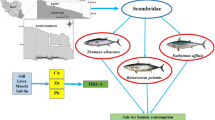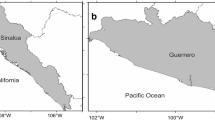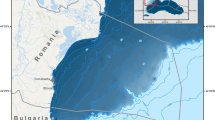Abstract
This study investigated the concentrations of potentially harmful elements (PHE) in edible tissues of trout fish (Salmo trutta) in the Phander Valley, Northern Pakistan. For this purpose, fish were sampled from the Phander Valley (Gilgit River and Phander Lake). PHE concentrations in edible fish tissues (muscle, fins, and skin) were determined using atomic absorption spectrometry (AAS, AAnalyst 700, Perkin Elmer, USA). Among PHE, zinc (Zn) showed the highest concentration of 1097 μg/kg in the skin, followed by manganese (Mn) of 241 μg/kg in the muscle, and the lowest of 3.78 μg/kg for cadmium (Cd) in fins. The concentration of PHE in fish tissues of the study area was observed within the threshold limits set by the food and agriculture organization (FAO). PHE concentration of fish tissues was used for the calculation of chronic risk assessment using the chronic daily intake (CDI) and hazard quotient (HQ) indices. The highest CDI values were observed for Zn through fish tissue consumption in juveniles, followed by Mn, and the lowest for Cd in adults. The HQ values were observed less than 1 for adults through PHE consumption in fish tissue; however, that of juvenile surpassed the threshold limit through Cd consumption in all studied tissues and that of Pb in the muscle and skins only. Higher HQ values than the threshold limit could pose a potential chronic risk to the exposed community. Spearman’s non-parametric correlation showed a varying degree of correlation among PHE in fish tissues and canonical discriminant analyses were used to differentiate the tissues based on PHE accumulation tendencies.




Similar content being viewed by others
Data Availability
The data that support the findings of this study are available from the corresponding author upon reasonable request.
Code Availability
Not applicable.
References
Rubalingeswari N, Thulasimala D, Giridharan L, Gopal V, Magesh NS, Jayaprakash M (2021) Bioaccumulation of heavy metals in water, sediment, and tissues of major fisheries from Adyar estuary, southeast coast of India: an ecotoxicological impact of a metropolitan city. Mar Pollut Bull 163:111964
Korkmaz C, Ay Ö, Ersoysal Y, Köroğlu MA, Erdem C (2019) Heavy metal levels in muscle tissues of some fish species caught from north-east Mediterranean: evaluation of their effects on human health. J Food Compos Anal 81:1–9
USEPA, US Environmental Protection Agency, Washington, DC, USA. Regional Screening Level (RSL) Resident Soil Table, (2018).
El-Moselhy KM, Othman AI, Abd El-Azem H, El-Metwally MEA (2014) Bioaccumulation of heavy metals in some tissues of fish in the Red Sea, Egypt. Egypt J Basic Appl Sci 1:97–105
Ikem A, Egiebor NO (2005) Assessment of trace elements in canned fishes (mackerel, tuna, salmon, sardines and herrings) marketed in Georgia and Alabama (United States of America). J Food Compos Anal 18:771–787
Prasad AS, Bao B (2019) Molecular mechanisms of zinc as a pro-antioxidant mediator: clinical therapeutic implications. Antioxidants 8:164
Muhammad S, Ahmad K (2020) Heavy metal contamination in water and fish of the Hunza River and its tributaries in Gilgit–Baltistan: evaluation of potential risks and provenance. Environ Technol Innov 20:101159
Uluozlu OD, Tuzen M, Mendil D, Soylak M (2007) Trace metal content in nine species of fish from the Black and Aegean Seas, Turkey. Food Chem 104:835–840
Gu Y-G, Lin Q, Huang H-H, Wang L-G, Ning J-J, Du F-Y (2017) Heavy metals in fish tissues/stomach contents in four marine wild commercially valuable fish species from the western continental shelf of South China Sea. Mar Pollut Bull 114:1125–1129
Imamura T, Ide H, Yasunaga H (2007) History of public health crises in Japan. J Public Health Policy 28:221–237
Castro-González MI, Méndez-Armenta M (2008) Heavy metals: implications associated to fish consumption. Environ Toxicol Pharmacol 26:263–271
Muhammad S, Usman QA (2021) Heavy metal contamination in water of Indus River and its tributaries, Northern Pakistan: evaluation for potential risk and source apportionment. Toxin Rev. https://doi.org/10.1080/15569543.2021.1882499
Lipy EP, Hakim M, Mohanta LC, Islam D, Lyzu C, Roy DC, Jahan I, Akhter S, Raknuzzaman M, Abu Sayed M (2021) Assessment of heavy metal concentration in water, sediment and common fish species of Dhaleshwari River in Bangladesh and their health implications. Biol Trace Elem Res 199:1–13
Özyurt G, Tabakoğlu ŞS, Özyurt CE (2021) Metal bioaccumulation in the gill, liver, and muscle of bluefish (Pomatomus saltatrix) from the Northeastern Mediterranean and human health risk assessment associated with their seasonal consumption. Arch Environ Contam Toxicol 81:1–9
Jayaprakash M, Kumar RS, Giridharan L, Sujitha SB, Sarkar SK, Jonathan MP (2015) Bioaccumulation of metals in fish species from water and sediments in macrotidal Ennore creek, Chennai, SE coast of India: a metropolitan city effect. Ecotox Environ Saf 120:243–255
Liu J-L, Xu X-R, Ding Z-H, Peng J-X, Jin M-H, Wang Y-S, Hong Y-G, Yue W-Z (2015) Heavy metals in wild marine fish from South China Sea: levels, tissue-and species-specific accumulation and potential risk to humans. Ecotoxicology 24:1583–1592
Hussain M, Muhammad S, Malik RN, Khan MU, Farooq U (2014) Status of heavy metal residues in fish species of Pakistan. Rev Environ Contam Toxicol 230:111–132
Ahmed ASS, Rahman M, Sultana S, Babu SMOF, Sarker MSI (2019) Bioaccumulation and heavy metal concentration in tissues of some commercial fishes from the Meghna River Estuary in Bangladesh and human health implications. Mar Pollut Bull 145:436–447
Mansour SA, Sidky MM (2002) Ecotoxicological studies. 3. Heavy metals contaminating water and fish from Fayoum Governorate, Egypt. Food Chem 78:15–22
Ayandiran TA, Fawole OO (2009) Bioconcentration of metals in the body muscle and gut of Clarias gariepinus exposed to sublethal concentrations of soap and detergent effluent. J Cell Anim Biol 3:113–118
Khan MS, Javed M, Rehman MT, Urooj M, Ahmad MI (2020) Heavy metal pollution and risk assessment by the battery of toxicity tests. Sci Rep 10:1–10
Hembrom S, Singh B, Gupta SK, Nema AK (2020) A comprehensive evaluation of heavy metal contamination in foodstuff and associated human health risk: a global perspective. Contemporary environmental issues and challenges in era of climate change, Springer, Singapore, pp 33–63
Ali MM, Ali ML, Proshad R, Islam S, Rahman Z, Tusher TR, Kormoker T, Al MA (2020) Heavy metal concentrations in commercially valuable fishes with health hazard inference from Karnaphuli river, Bangladesh. Hum Ecol Risk Assess Int J 26:2646–2662
Dane H, Şi̇şman T (2020) A morpho-histopathological study in the digestive tract of three fish species influenced with heavy metal pollution. Chemosphere 242:125212
Zhao YG, Wan HT, Law AYS, Wei X, Huang YQ, Giesy JP, Wong MH, Wong CKC (2011) Risk assessment for human consumption of perfluorinated compound-contaminated freshwater and marine fish from Hong Kong and Xiamen. Chemosphere 85:277–283
Arisekar U, Shakila RJ, Shalini R, Jeyasekaran G (2020) Human health risk assessment of heavy metals in aquatic sediments and freshwater fish caught from Thamirabarani River, the Western Ghats of South Tamil Nadu. Mar Poll Bull 159:111496
Zerizghi T, Yang Y, Wang W, Zhou Y, Zhang J, Yi Y (2020) Ecological risk assessment of heavy metal concentrations in sediment and fish of a shallow lake: a case study of Baiyangdian Lake, North China. Environ Monit Assess 192:1–16
Töre Y, Ustaoğlu F, Tepe Y, Kalipci E (2021) Levels of toxic metals in edible fish species of the Tigris River (Turkey); Threat to public health. Ecol Indic 123:107361
Kakar A, Hayat MT, Abbasi AM, Pervez A, Mahmood Q, Farooq U, Akbar TA, Ali S, Rizwan M, El-Serehy HA (2020) Risk assessment of heavy metals in selected marine fish species of Gadani shipbreaking area and Pakistan. Animals 10:1738
Ngoc NTM, Chuyen NV, Thao NTT, Duc NQ, Trang NTT, Binh NTT, Sa HC, Tran NB, Ba NV, Khai NV (2020) Chromium, cadmium, lead, and arsenic concentrations in water, vegetables, and seafood consumed in a coastal area in Northern Vietnam. Environ Health Insights 14:1178630220921410
Jagoutz O, Schmidt MW (2013) The nature and composition of the crustal delaminate in arcs. Earth Planet Sci Lett 371:177–190
Petterson MG, Treloar PJ (2004) Volcanostratigraphy of arc volcanic sequences in the Kohistan arc, North Pakistan: volcanism within island arc, back-arc-basin, and intra-continental tectonic settings. J Volcanol Geotherm Res 130:147–178
USEPA (2000) Guideline for assessing chemical contaminant data for use in fish advisories, Vol. I: Fish sampling and analysis, Office of Water. US Environmental Protection Agency, Washington, DC.
USEPA, United States Environmental Protection Agency (2016) Risk-based concentration table. Region 3 Philadelphia, PA. https://cfpub.epa.gov/ncea/iris/search/index.cfm. Accessed 15 May 2021
Jarić I, Višnjić-Jeftić Ž, Cvijanović G, Gačić Z, Jovanović L, Skorić S, Lenhardt M (2011) Determination of differential heavy metal and trace element accumulation in liver, gills, intestine and muscle of sterlet (Acipenser ruthenus) from the Danube River in Serbia by ICP-OES. Microchem J 98:77–81
Muhammad S, Ullah S, Ali W, Jadoon IAK, Arif M (2021) Spatial distribution of heavy metal and risk indices of water and sediments in the Kunhar River and its tributaries, Geocarto Int 1-17
Lopez SA, Abarca NL, Meléndez RC (2013) Heavy metal concentrations of two highly migratory sharks (Prionace glauca and Isurus oxyrinchus) in the southeastern Pacific waters: comments on public health and conservation. Trop Conserv Sci 6:126–137
Hansen BH, Rømma S, Garmo ØA, Olsvik PA, Andersen RA (2006) Antioxidative stress proteins and their gene expression in brown trout (Salmo trutta) from three rivers with different heavy metal levels. Comp Biochem Physiol C Toxicol Pharmacol 143:263–274
Dizman S, Görür FK, Keser R (2017) Assessment of human health risk from heavy metals levels in water and tissues of two trout species (Oncorhynchus mykiss and Salmo coruhensis) from the Fırtına and Güneysu Rivers in Turkey. Toxin Rev 36:306–312
FAO, (Food and Agricultural Organization) (1983) Compilation of legal limits for hazardous substances in fish and fishery products. FAO Fisheries Circular 764
Chi Q-Q, Zhu G-W, Langdon A (2007) Bioaccumulation of heavy metals in fishes from Taihu Lake, China. J Environ Sci 19:1500–1504
Patin SA (1984) Tilapia (Oreochronic Mossambicas Peters, 1852) as a bio-assay organism in toxicological studies, Biogeochemical and toxicological studies of water pollution, Vniro, Moskva (USSR), 39-46
Dadar M, Adel M, Nasrollahzadeh Saravi H, Fakhri Y (2017) Trace element concentration and its risk assessment in common kilka (Clupeonella cultriventris caspia Bordin, 1904) from southern basin of Caspian Sea. Toxin Rev 36:222–227
Uysal K (2011) Heavy metal in edible portions (muscle and skin) and other organs (gill, liver and intestine) of selected freshwater fish species. Int J Food Prop 14:280–286
Rajeshkumar S, Liu Y, Ma J, Duan HY, Li X (2017) Effects of exposure to multiple heavy metals on biochemical and histopathological alterations in common carp, Cyprinus carpio L. Fish Shellfish Immunol 70:461–472
Albu P, Herman H, Balta C, Lazar V, Fulop A, Baranyai E, Harangi S, Keki S, Nagy L, Nagy T (2021) Correlation between heavy metal-induced histopathological changes and trophic interactions between different fish species. Appl Sci 11:3760
Zhong W, Zhang Y, Wu Z, Yang R, Chen X, Yang J, Zhu L (2018) Health risk assessment of heavy metals in freshwater fish in the central and eastern North China. Ecotoxicol Environ Saf 157:343–349
Rakocevic J, Sukovic D, Maric D (2018) Distribution and relationships of eleven trace elements in muscle of six fish species from Skadar Lake (Montenegro). Turk J Fish Aquat Sci 18:647–657
Petrea Ş-M, Costache M, Cristea D, Strungaru Ş-A, Simionov I-A, Mogodan A, Oprica L, Cristea V (2020) A machine learning approach in analyzing bioaccumulation of heavy metals in turbot tissues. Molecules 25:4696
Ghosh L, Adhikari S (2006) Accumulation of heavy metals in freshwater fish-an assessment of. Am J Food Technol 50:139–148
Varol M, Kaya GK, Alp A (2017) Heavy metal and arsenic concentrations in rainbow trout (Oncorhynchus mykiss) farmed in a dam reservoir on the Firat (Euphrates) River: risk-based consumption advisories. Sci Total Environ 599–600:1288–1296
Gokoglu N, Yerlikaya P, Cengiz E (2004) Effects of cooking methods on the proximate composition and mineral contents of rainbow trout (Oncorhynchus mykiss). Food Chem 84:19–22
Santerre CR, Bush PB, Xu DH, Lewis GW, Davis JT, Grodner RM, Ingram R, Wei CI, Hinshaw JM (2001) Metal residues in farm-raised channel catfish, rainbow trout, and red swamp crayfish from the Southern US. J Food Sci 66:270–273
Fallah AA, Saei-Dehkordi SS, Nematollahi A, Jafari T (2011) Comparative study of heavy metal and trace element accumulation in edible tissues of farmed and wild rainbow trout (Oncorhynchus mykiss) using ICP-OES technique. Microchem J 98:275–279
Lourenço HM, Afonso C, Anacleto P, Martins MF, Nunes ML, Lino AR (2012) Elemental composition of four farmed fish produced in Portugal. Int J Food Sci Nutr 63:853–859
Jiang H, Qin D, Mou Z, Zhao J, Tang S, Wu S, Gao L (2016) Trace elements in farmed fish (Cyprinus carpio, Ctenopharyngodon idella and Oncorhynchus mykiss) from Beijing: implication from feed. Food Addit Contam B 9:132–141
Acknowledgements
We acknowledge the financial and technical support of the Director, National Centre of Excellence (NCE) in Geology, University of Peshawar. We also acknowledge the technical support of Mr. Ayaz ul Haq, PhD research scholar of NCE in Geology, University of Peshawar.
Author information
Authors and Affiliations
Contributions
Said Muhammad designed this study, drafted and edited the manuscript. Wajid Ali performed statistical analysis and edited the manuscript, Inayat ur Rehman performed analyses and edited this manuscript.
Corresponding author
Ethics declarations
Ethics Approval
Not applicable.
Consent to Participate
All authors reviewed and approved the final manuscript.
Consent for Publication
All authors approved for this publication.
Conflict of Interest
The authors declare no competing interests.
Additional information
Publisher's Note
Springer Nature remains neutral with regard to jurisdictional claims in published maps and institutional affiliations.
Rights and permissions
About this article
Cite this article
Muhammad, S., Ali, W. & ur Rehman, I. Potentially Harmful Elements Accumulation and Health Risk Assessment of Edible Fish Tissues Caught from the Phander Valley, Northern Pakistan. Biol Trace Elem Res 200, 4837–4845 (2022). https://doi.org/10.1007/s12011-021-03051-z
Received:
Accepted:
Published:
Issue Date:
DOI: https://doi.org/10.1007/s12011-021-03051-z




